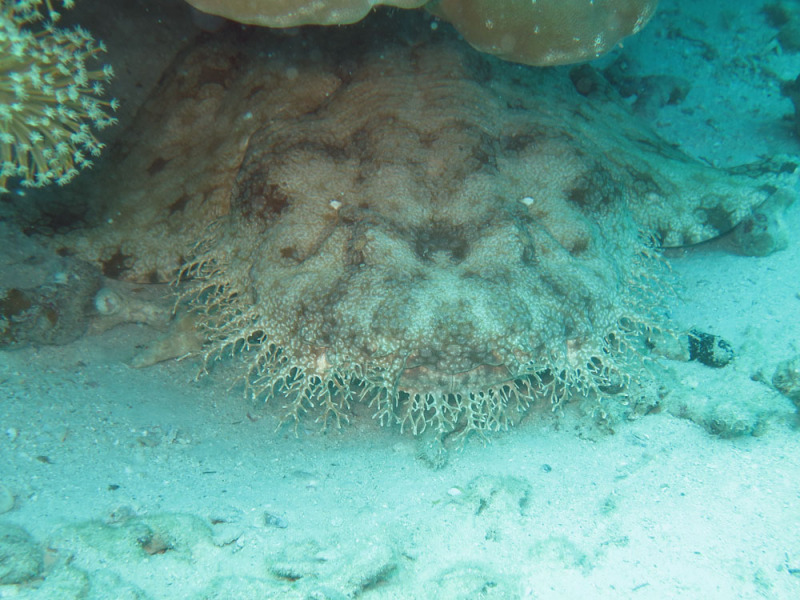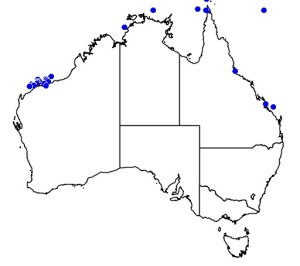Colours
Distinguishing features
It has a broad and flattened body and head. Its most distinctive trait is a fringe of branching dermal flaps around its head, which extends onto its chin. The fringe, along with its complex color pattern of small blotches and reticulations, enable it to camouflage itself against the reef environment. (Wikipedia)
Size
- Up to 180 cm (Length of specimen)
Depth range
- Up to 50 m
Synonyms
Similar taxa
Distribution
Distribution and habitat preferences
Its range encompasses the continental shelf of northern Australia from Ningaloo Reef in the west to Bundaberg in the east, as well as New Guinea, Waigeo, and the Aru Islands. �Additional records from Malaysia are unconfirmed.
It inhabits coral reefs, perhaps exclusively, in both inshore and offshore waters. It is most often encountered in reef channels and faces, or atop coral heads. (Wikipedia)
Local abundance
- Lizard Island: Wobbegongs are very rarely seen at Lizard Island. This species has only been recorded once from the area.
Chronotypes
Behaviour
During the day, the solitary tasselled wobbegong can generally be found lying inside caves or under ledges with its tail curled. Individual sharks tend to remain within a local area and have favored resting spots. While resting, it opportunistically ambushes nearby fishes and invertebrates, and also lures in prey by waving its tail to mimic the appearance of a small fish. At night, it emerges and actively forages for food. (Wikipedia)
Web resources
References
- Allen, G., R. Steene, P. Humann and N. Deloach (2003). Reef fish identification: Tropical Pacific New World Publications Inc., Jacksonville, FL, USA.


